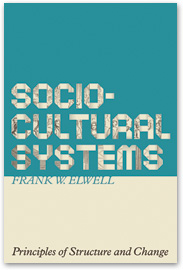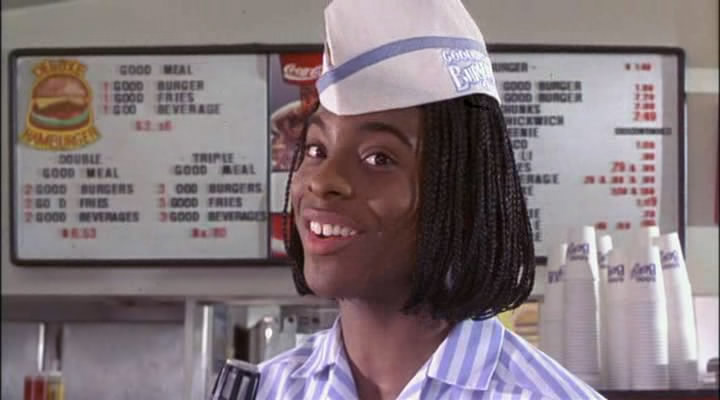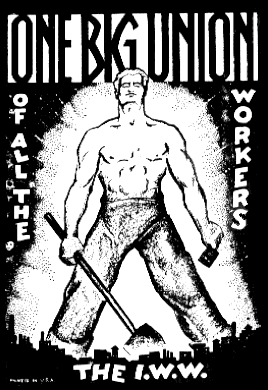
Sociocultural Systems: Principles of Structure and Change Macrosociology: Four Modern Theorists A Commentary on Malthus" 1798 Essay as Social Theory Great Classical Social Theorists
|
rbert Spencer's Evolutionary
Sociology Harry Braverman [1920-1976] | ||||||||||||||||||||||||||||||||||||||||||||||||||||||||||||||||||||||||||||||||||||||||||||||||
|
Harry Braverman on the Working Class
By Frank W. Elwell
The process of turning
workers into commodities is continually being extended into more areas of the
economy. Further, each succeeding generation has to be acclimated to the new
mode of work; each has to be socialized to overcome the initial revulsion to the
ever more detailed division of labor, the consequent rending of human beings.
This ever-widening process, Braverman claims, becomes a permanent feature of
capitalist society. Laborers are increasingly seen as machines, machines that
can be readily adapted to the requirements of most any job. This view of man as
a machine, Braverman says, has become more than a mere analogy. For the
capitalist class, the laborer as machine is how the class To demonstrate this polarization Braverman performs an
analysis of census data to determine the size of the working classes throughout
the 2oth century. The working class, he says, consists of those who come to the
labor market with nothing to sell but their labor. This labor is systematically
exploited and degraded by the capitalist system. To enable growth in profit
businesses break skills down to simple tasks, automate where economically
feasible, and manipulate the speed of production. These processes do not just
occur in manufacturing operations, Braverman adds, but throughout the capitalist
economy.
Working Class (in millions)
The number of service workers rose from 1 million at the turn
of the century to some 9 million by the 1970 census. While there are a couple of
occupations in this grouping that require some educational credentials and
extensive on the job training, most are low skill, low pay, and often temporary.
To this group Braverman adds retail sales workers and cashiers, people with the
same skills and compensation as the majority of service workers. By 1970,
Braverman reports, there were a total of 3 million such workers.
For an update I used Braverman’s classification scheme to
examine the size of the working class since the 1970. This table again presents
Braverman’s breakdown of occupational classifications with the addition of the
years 1983 and 2001.
Working Class (in millions)
It would appear that the proportional decline is due to the
relatively slow growth in the number of manufacturing jobs in America. These
manufacturing jobs have been slow growing due to automation and international
trade in which many goods now come from other countries, and many low skilled
American manufacturing jobs have been exported or “outsourced.” Compared to
manufacturing, it is far more difficult to automate or export most personal
service work. And this is what accounts for much of our legal and illegal
immigration. If you cannot have the services provided from cheaper overseas
labor markets, another option is to import cheaper foreign laborers. Clerical work stands somewhat intermediate between
manufacturing and service occupations. The personal computer has made it
relatively inexpensive to automate typing and filing services even in small
offices. While some of these jobs can be shipped overseas, cultural differences
prevent too much off shoring such occupations. So, for the first 70 years of the 20th century
Braverman found that the percentage of the American workforce engaged in
essentially rote manual and clerical occupations, with little skill, educational
Can an industrial society exist without a significant portion
of the working population engaged in rote manual or clerical labor? Is a
capitalist- industrial society even possible without the bulk of the people
engaged in the detailed division of labor—isn’t such a society defined by this
very division? The bulk of the
growth in U.S. jobs since Braverman is mainly attributable to the rapid growth
of “Managerial and Professional Specialty” occupations. Braverman estimates that
by 1970 some 20 percent of the workforce was engaged in lower levels of
management and professional specialties. By 1983, these occupations accounted
for some 23 The “Professional Specialty” categories grew from 13 percent
of the total workforce in 1983 to 16 percent in 2001. About half of this
category is from education and medicine.
In all, Braverman estimated that only 3% of the 1970 workforce consisted
of technical specialists such as engineers, architects, draftsmen, designers,
and natural scientists. In 1983 this had grown to only 3.5% of the workforce in
1983, and to 4.7% in 2001. Interestingly, computer scientists accounted for the
bulk of this growth, a technical expertise almost unknown in the 1970 census.
Excluding their numbers the concentration of technical expertise for both 1983
and 2001 is at Braverman’s estimate of about 3% of the labor force. The workforce of hyperindustrial society is not completely
congruent with that of the industrial society analyzed by Braverman. As is
necessary for a more complex technological infrastructure and a more
bureaucratic structure, there are a higher proportion of executives, managers,
and professionals in the workforce. Some of these positions, no doubt, are given
high degrees of latitude and freedom, some are
The economy as a whole still depends on a large working class population both domestically and increasingly on a global scale. The bulk of these jobs are unskilled or semi-skilled occupations, and increasing proportion of them in the U.S. are in sales and personal services. Because our economic and political system is dominated by capitalism, the entire sociocultural system is organized around the need to expand capital. It is this drive that is behind the ever more detailed division of labor, the adoption of computers and other technologies to replace workers, immigration and off shoring, the degradation of work and workers, and the polarization within and between societies. For a more extensive discussion of Braverman’s theories refer to Macro Social Theory by Frank W. Elwell. Also see Sociocultural Systems: Principles of Structure and Change to learn how his insights contribute to a fuller understanding of modern societies.
Bibliography
Braverman, H. (1974/1998). Labor and Monopoly Capital: The Degradation of
Work in the Twentieth Century. New York: Monthly Review Press.
Elwell, F. W. 2009. Macrosociology: The Study of Sociocultural Systems.
Lewiston: Edwin Mellen Press.
Elwell, F. W. 2006. Macrosociology: Four Modern Theorists. Boulder:
Paradigm Publishers.
Elwell, F. W. 2013. Sociocultural Systems: Principles of Structure and Change.
Alberta: Athabasca University Press. To reference "Harry Braverman on the Working Class," you should use the following format: Elwell, Frank W., 2013, "Harry Braverman on the Working Class," Retrieved August 31, 2013, [use actual date] http://www.faculty.rsu.edu/~felwell/Theorists/Essays/Braverman2.htm
©2013 Frank Elwell, Send comments to felwell at rsu.edu |
 has come to use labor,
it is how it has come to view humanity. The process leads to the polarization of
American society, Braverman claims, with a few at the top of the hierarchy
having tremendous power, wealth, and control and the great mass of workers at
the bottom, with few skills, resources, or prospects.
has come to use labor,
it is how it has come to view humanity. The process leads to the polarization of
American society, Braverman claims, with a few at the top of the hierarchy
having tremendous power, wealth, and control and the great mass of workers at
the bottom, with few skills, resources, or prospects.
 So, the percentage of the workforce engaged in essentially
rote manual labor, with little skill, educational requirements, autonomy, or
decent compensation has been growing each decade from the turn of the century
through 1970, then comprising almost 70% of the working population. Work in the
American economy has become very polarized, with a few people having all of the
technical expertise and managerial control over a largely unskilled and
uneducated workforce.
So, the percentage of the workforce engaged in essentially
rote manual labor, with little skill, educational requirements, autonomy, or
decent compensation has been growing each decade from the turn of the century
through 1970, then comprising almost 70% of the working population. Work in the
American economy has become very polarized, with a few people having all of the
technical expertise and managerial control over a largely unskilled and
uneducated workforce.  numbers among the four basic
categories. Only one category experienced an absolute decline, that of
“Operatives and Laborers.” Clerical and Service & Sales workers both grew
rapidly, Clerical from 12 percent of the workforce in 1950, to 14 percent in
2001; Service and Sales from 15% to 22%.
numbers among the four basic
categories. Only one category experienced an absolute decline, that of
“Operatives and Laborers.” Clerical and Service & Sales workers both grew
rapidly, Clerical from 12 percent of the workforce in 1950, to 14 percent in
2001; Service and Sales from 15% to 22%. requirements, autonomy, or decent compensation has been growing each decade.
However, this trend has been halted and reversed in the latter third of the
century. Though it should be pointed out that even today the working class is
still a majority of the employed population in hyperindustrial society, the
trend now seems to be in the opposite direction. How far this trend can go is
open to question.
requirements, autonomy, or decent compensation has been growing each decade.
However, this trend has been halted and reversed in the latter third of the
century. Though it should be pointed out that even today the working class is
still a majority of the employed population in hyperindustrial society, the
trend now seems to be in the opposite direction. How far this trend can go is
open to question.  million of the employed, or 23% of the population. By 2001 these
occupations had ballooned to 31% of the employed population.
million of the employed, or 23% of the population. By 2001 these
occupations had ballooned to 31% of the employed population. highly paid and prestigious as
well. However, contrary to the postindustrial dreamers, these elite do not (nor
can they ever) make up the bulk of the society. Nor are most of them a part of
the elite, as Mills described in White Collar, they are very much dependent upon
the bureaucratic organizations of private industry, nongovernmental agencies,
and governments.
highly paid and prestigious as
well. However, contrary to the postindustrial dreamers, these elite do not (nor
can they ever) make up the bulk of the society. Nor are most of them a part of
the elite, as Mills described in White Collar, they are very much dependent upon
the bureaucratic organizations of private industry, nongovernmental agencies,
and governments.